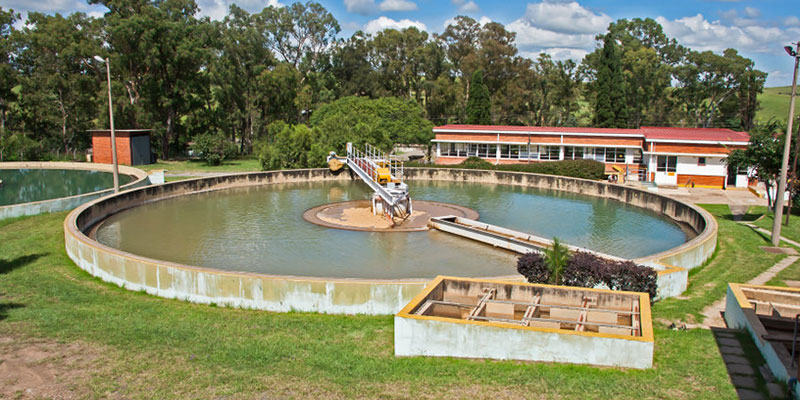Traditional activated sludge wastewater treatment plants, like this one in South Africa, require a trained workforce.
Incentive-based Green Drop, Blue Drop, and No Drop programs, abandoned in 2014, led to improvements in water sector
Amid a water and sanitation crisis caused by infrastructure disrepair in South Africa, the Water Institute of Southern Africa NPC (WISA) is calling for the revival of a very effective set of incentive-based certifications that fell by the wayside in 2014. When the country’s Department of Water and Sanitation began issuing the certifications to municipalities in 2008, they catalyzed widespread improvement throughout the nation’s water sector. The Green Drop, Blue Drop, and No Drop certifications pertained to regulation in three areas:
- Green Drop: Wastewater service
- Blue Drop: Drinking water quality
- No Drop: Water use efficiency
The certification programs proved widely successful with rewards and penalties based on standardized scorecards. They not only tended to lead to improved performance, but also provided a wealth of data, measuring key indicators of sustainable, safe water and wastewater service delivery, including:
- Management commitment
- Safety and risk planning and mitigation
- Process management
- Quality compliance
- Staff qualification
- Adequate budgets
The voluntary Green Drop incentive-based program, which attracted 152 municipalities after an initial 98, led to a much better understanding of wastewater treatment so problems were more efficiently addressed.
Involvement in the Blue Drop program grew from 107 municipalities in 2009 to 152 in 2010, with the number of assessed systems growing from 1,009 in 2012 to approximately 1,085 by 2014. Continual improvements were noted.
The No Drop Program proved very effective in improving water conservation in municipal water services. For instance, in 2014, the program led to a reduction of non-revenue water in uMhlathuze Municipality from 48% to 30%.
Slide in Water Quality
Since the programs were dropped in 2014, evidence has mounted that the quality of drinking water and discharged effluent has decreased while non-revenue water has increased in numerous water systems. The National Water and Sanitation Master Plan has raised the alarm that many of South Africa’s water and wastewater treatment facilities have fallen into disrepair and are posing a threat to public health.
Almost 1,000 water treatment facilities in South Africa have been cited as being in “poor to critical” condition, as have 56% of the more than 1,150 municipal wastewater treatment plants, which need rehabilitation and qualified process controllers and other trained workers.
Helpful Technologies and Strategies
With the proposed reintroduction of water and wastewater treatment standards, many are looking to introduce new infrastructure or upgrade existing plants. There are a variety of smart options to choose from.
Biological treatment with the legacy activated sludge process is very effective, yet the process is difficult to maintain and requires an experienced workforce. Fortunately, there’s a biological treatment technology called membrane aerated biofilm reactor (MABR), which provides high-quality treatment with minimal maintenance required. Instead of requiring an experienced workforce onsite, Fluence’s packaged MABR treatment can be operated and monitored remotely.
Fluence’s Aspiral™ packages MABR in a shipping container for quick delivery and installation. It’s an example of decentralized wastewater treatment, or smaller, local treatment plants placed close to the point of need. Local treatment avoids wasting capital on long pipe runs to distant treatment works, the expense of pipe maintenance and repairs, and the potential for non-revenue water.
Fluence’s Aspiral™ produces effluent that meets the toughest water quality regulatory frameworks for reuse including California’s Title 22 and China’s Class 1A, meaning it can safely be reused for agriculture. With additional treatment, it can be brought to potable standards for drinking.
While some are interested in installing new plants, others are interested in upgrading existing plants. MABR technology can also be dropped into existing plants to increase wastewater treatment capacity and quality without increasing the footprint. Fluence’s submergible MABR towers, also known as SUBRE, perform simultaneous nitrification-denitrification for high-quality water and increased capacity.
Water treated with proven MABR technology is safe for environmental discharge and can be used for nonpotable municipal applications like street cleaning, transport washing, landscaping and agricultural irrigation, and toilet flushing.
Contact Fluence to discuss how modular treatment can bring your municipality to Green Drop, Blue Drop, and No Drop compliance.

